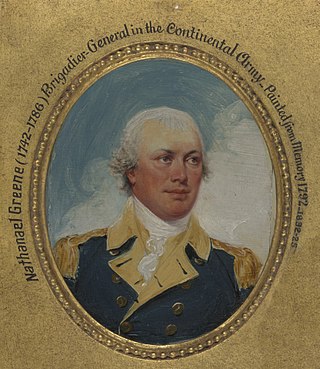
Major-General Nathanael Greene was an American military officer and planter who served in the Continental Army during the Revolutionary War. He emerged from the war with a reputation as one of George Washington's most talented and dependable officers, and is known for his successful command in the Southern theater of the conflict.
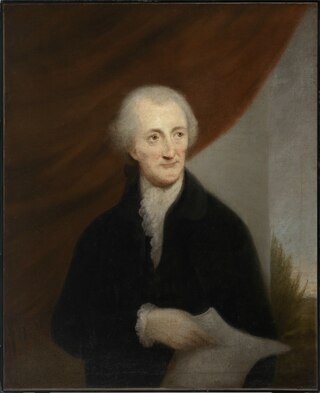
George Read was an American politician from New Castle in New Castle County, Delaware. He was a Continental Congressman from Delaware, a delegate to the U.S. Constitutional Convention of 1787, president of Delaware, and a member of the Federalist Party. In addition, Read served as U.S. Senator from Delaware and chief justice of Delaware.

Bonaventure Cemetery is a rural cemetery located on a scenic bluff of the Wilmington River, east of Savannah, Georgia. The cemetery's prominence grew when it was featured in the 1994 novel Midnight in the Garden of Good and Evil by John Berendt, and in the subsequent movie, directed by Clint Eastwood, based on the book. It is the largest of the city's municipal cemeteries, containing nearly 160 acres (0.65 km2).
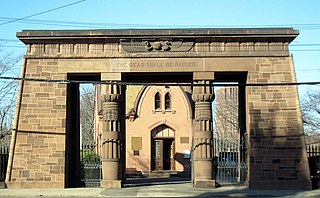
Grove Street Cemetery or Grove Street Burial Ground is a cemetery in New Haven, Connecticut, that is surrounded by the Yale University campus. It was organized in 1796 as the New Haven Burying Ground and incorporated in October 1797 to replace the crowded burial ground on the New Haven Green. The first private, nonprofit cemetery in the world, it was one of the earliest burial grounds to have a planned layout, with plots permanently owned by individual families, a structured arrangement of ornamental plantings, and paved and named streets and avenues. By introducing ideas like permanent memorials and the sanctity of the deceased body, the cemetery became "a real turning point... a whole redefinition of how people viewed death and dying", according to historian Peter Dobkin Hall. Many notable Yale and New Haven luminaries are buried in the Grove Street Cemetery, including 14 Yale presidents; nevertheless, it was not restricted to members of the upper class, and was open to all.

Richard Bassett was an American politician, attorney, slave owner and later abolitionist, veteran of the American Revolution, signer of the United States Constitution, and one of the Founding Fathers of America. He also served as United States Senator from Delaware, chief justice of the Delaware Court of Common Pleas, governor of Delaware and a United States circuit judge of the United States Circuit Court for the Third Circuit.

Joseph Habersham was an American businessman, Georgia politician, soldier in the Continental Army, and Postmaster General of the United States.

Christ Church Burial Ground in Philadelphia is an important early-American cemetery. It is the final resting place of Benjamin Franklin and his wife, Deborah. Four other signers of the Declaration of Independence are buried here, Benjamin Rush, Francis Hopkinson, Joseph Hewes, and George Ross. Two additional signers of the Declaration of Independence, James Wilson and Robert Morris, are buried at Christ Church just a few blocks away.

Edward Telfair was a Scottish-born American Founding Father, politician and slave trader who served as the governor of Georgia from 1786 to 1787 and again from 1790 to 1793. He was a member of the Continental Congress and one of the signers of the Articles of Confederation.
William Gibbons was an American lawyer and revolutionary from Georgia. He was born at Bear Bluff, SC, April 8, 1726; studied law in Charleston, SC; was admitted to the bar and practiced in Savannah, GA; member of the colonial assembly 1760–1762; joined the Sons of Liberty in 1774, and on May 11, 1775, was one of the party that broke open the magazine in Savannah and removed 600 pounds of the King's powder; delegate to the Provincial Congress of July 1775, and was chosen a member of the committee of safety on December 11, 1775; member of the executive council 1777–1781; associate justice of Chatham County in 1781 and 1782; Member of the Continental Congress in 1784; member of the State house of representatives in 1783, 1785–1789, and 1791–1793, and served as speaker in 1783, 1786, and 1787; president of the State constitutional convention in 1789; justice of the inferior court of Chatham County 1790–1792; died in Savannah, Ga., September 27, 1800; interment probably in Colonial Park, formerly called the Old Cemetery, or Christ Church Cemetery.

John Habersham was an American merchant, planter, and soldier from Georgia. He was the son of loyalist official James Habersham, the younger brother of patriot leader Joseph Habersham. They were both the younger brothers of James Habersham Jr. He served as an officer in the 1st Georgia Regiment during the American Revolutionary War. He was a delegate to the Congress of the Confederation in 1785. John Habersham was a member of the Society of the Cincinnati of the State of Georgia.
Josiah Tattnall was an American planter, soldier and politician from Savannah, Georgia. He represented Georgia in the U.S. Senate from 1796 to 1799, and was the 25th Governor of Georgia in 1801 and 1802. Born near Savannah, Georgia, at Bonaventure Plantation in the early 1760s to Mary Mullryne and Josiah Tattnall, he studied at Eton School before joining Anthony Wayne's troops at Ebenezer during the American Revolutionary War. After the war, he was elected brigadier general of the 1st Regiment in the Georgia Militia. He helped to rescind the Yazoo land fraud of 1795. He died in Nassau, New Providence.
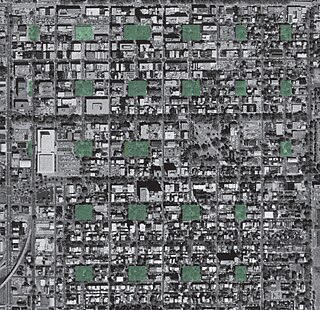
The city of Savannah, Province of Georgia, was laid out in 1733, in what was colonial America, around four open squares, each surrounded by four residential ("tything") blocks and four civic ("trust") blocks. The layout of a square and eight surrounding blocks was known as a "ward." The original plan was part of a larger regional plan that included gardens, farms, and "out-lying villages." Once the four wards were developed in the mid-1730s, two additional wards were laid. Oglethorpe's agrarian balance was abandoned after the Georgia Trustee period. Additional squares were added during the late 18th and 19th centuries, and by 1851 there were 24 squares in the city. In the 20th century, three of the squares were demolished or altered beyond recognition, leaving 21. In 2010, one of the three "lost" squares, Ellis, was reclaimed, bringing the total to today's 22.

Greyfriars Kirkyard is the graveyard surrounding Greyfriars Kirk in Edinburgh, Scotland. It is located at the southern edge of the Old Town, adjacent to George Heriot's School. Burials have been taking place since the late 16th century, and a number of notable Edinburgh residents are interred at Greyfriars. The Kirkyard is operated by City of Edinburgh Council in liaison with a charitable trust, which is linked to but separate from the church. The Kirkyard and its monuments are protected as a category A listed building.
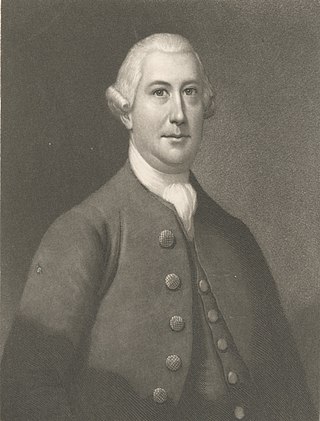
James Habersham was an English-born American merchant, planter, missionary, teacher and politician who lived the majority of his life in the Province of Georgia. Habersham is credited with opening the first direct trade between Savannah, Georgia, and London. He was an influential advocate for slavery in the Thirteen Colonies and served as Secretary of Georgia and as President of the Georgia General Assembly's Upper House. In opposition to his adult sons, Habersham remained loyal to the Crown during the American Revolution.
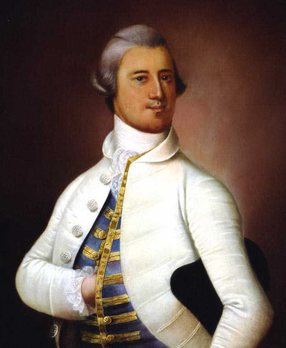
James Habersham Jr. was an American merchant, slave trader, planter and politician who served as the speaker of the Georgia General Assembly in 1782 and 1784.

Johnson Square is one of the 22 squares of Savannah, Georgia, United States. Located in the northernmost row of the city's five rows of squares, it was the first of the squares to be laid out, in 1733, and remains the largest of the 22. It is east of Ellis Square, west of Reynolds Square and north of Wright Square. Situated on Bull Street and St. Julian Street, it is named for Robert Johnson, colonial governor of South Carolina and a friend of General James Oglethorpe. The oldest building on the square is the Ann Hamilton House, at 26 East Bryan Street, which dates to 1824.
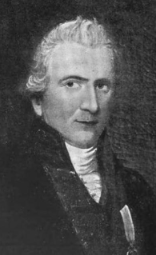
John Berrien was a brigade major during the American Revolutionary War.
John Mullryne was a British Army colonel who established Bonaventure Plantation in Savannah, Province of Georgia, in 1761. A supporter of the Crown, he later drew the ire of the colonists after aiding the escape of James Wright, the British royal governor of the Province of Georgia, through his property during the American Revolutionary War.

















